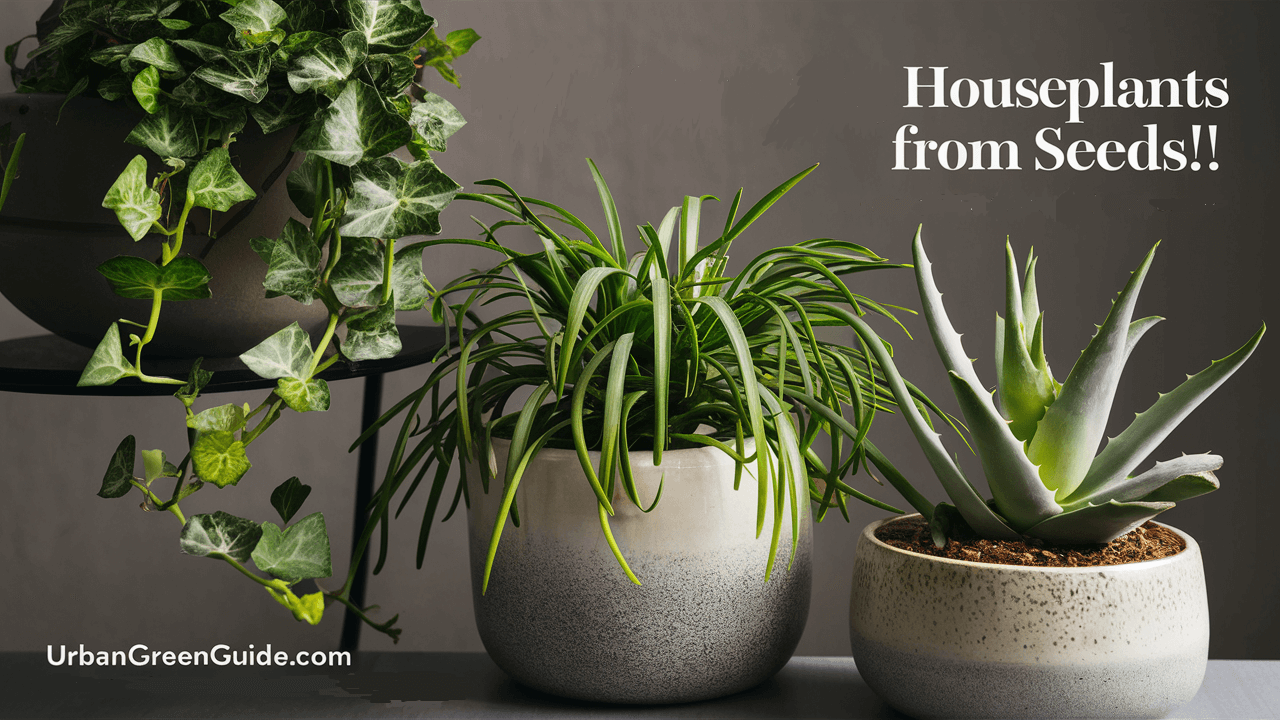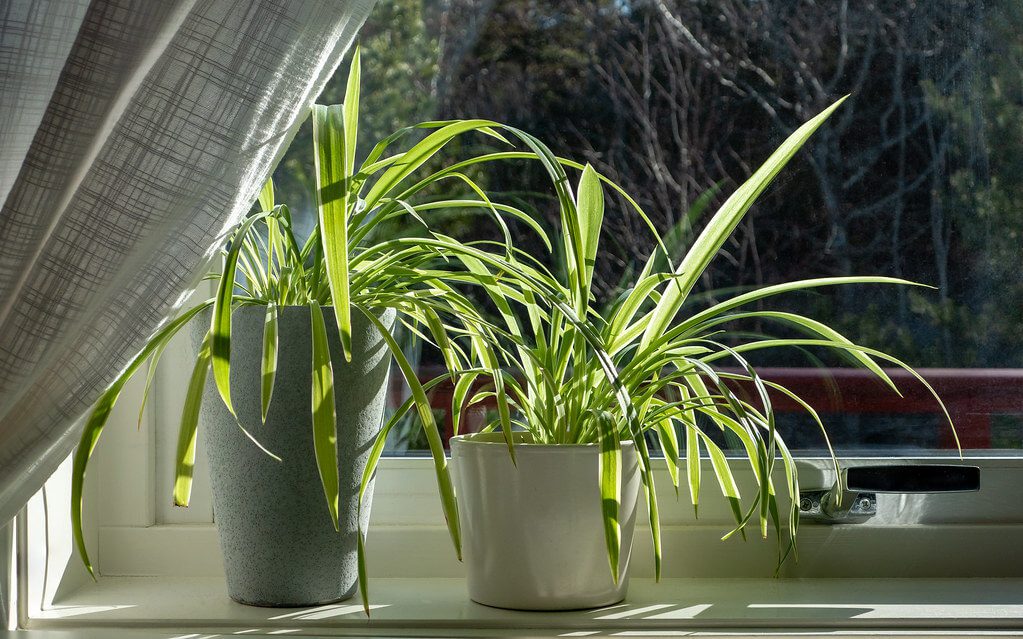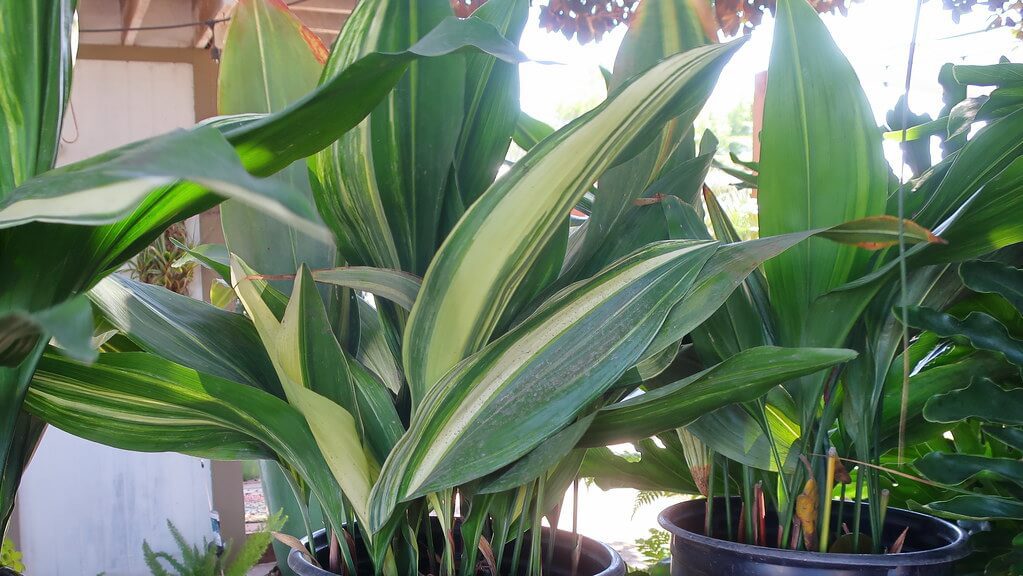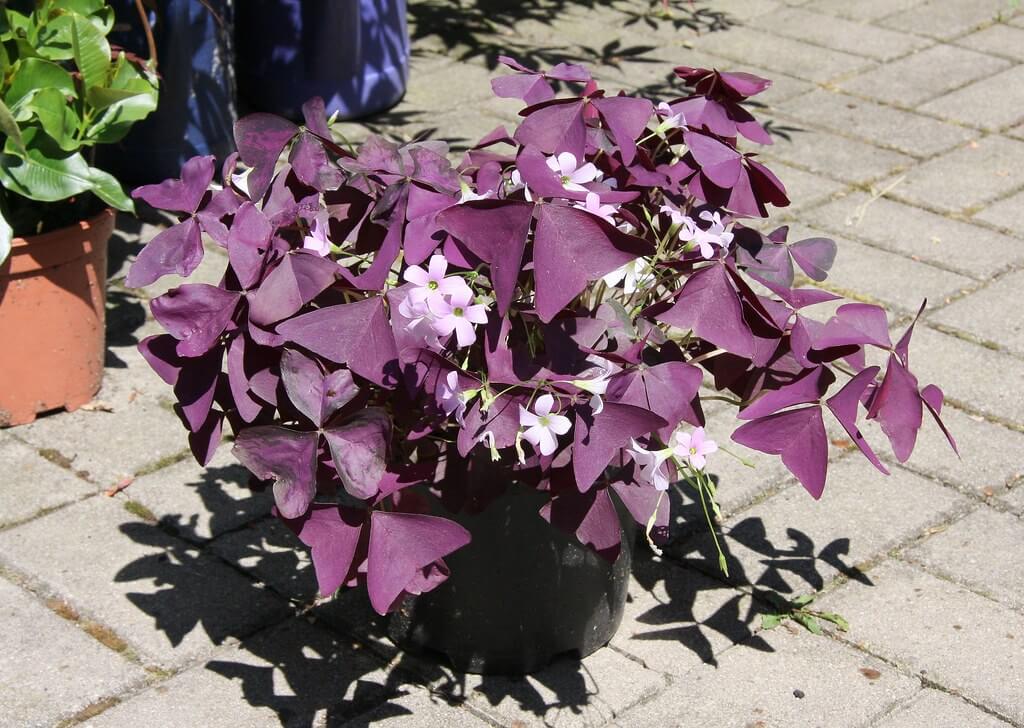Hey there, plant lovers! Welcome to the world of growing house plants from seeds.
Ever wondered how those beautiful houseplants get started? Spoiler alert: they all begin as tiny, magical seeds! Imagine being able to say, "I grew this from a seed," while proudly showing off your lush, green indoor jungle. Sounds pretty cool, right?
Growing houseplants from seeds is like embarking on an epic adventure. You’re the hero, and your mission is to transform those tiny seeds into magnificent plants.
It’s a bit like magic, except instead of waving a wand, you get your hands a little dirty. But don’t worry, we’ve got all the tips and tricks you need to succeed.
In this blog, we’re going to dive deep into the world of houseplants from seeds. We’ll cover everything from the basics—like what seeds need to germinate (hint: it’s not a magic spell)—to the best equipment to use, and where to find top-notch seeds.
Plus, we’ll answer all your burning questions about starting houseplants from seeds.
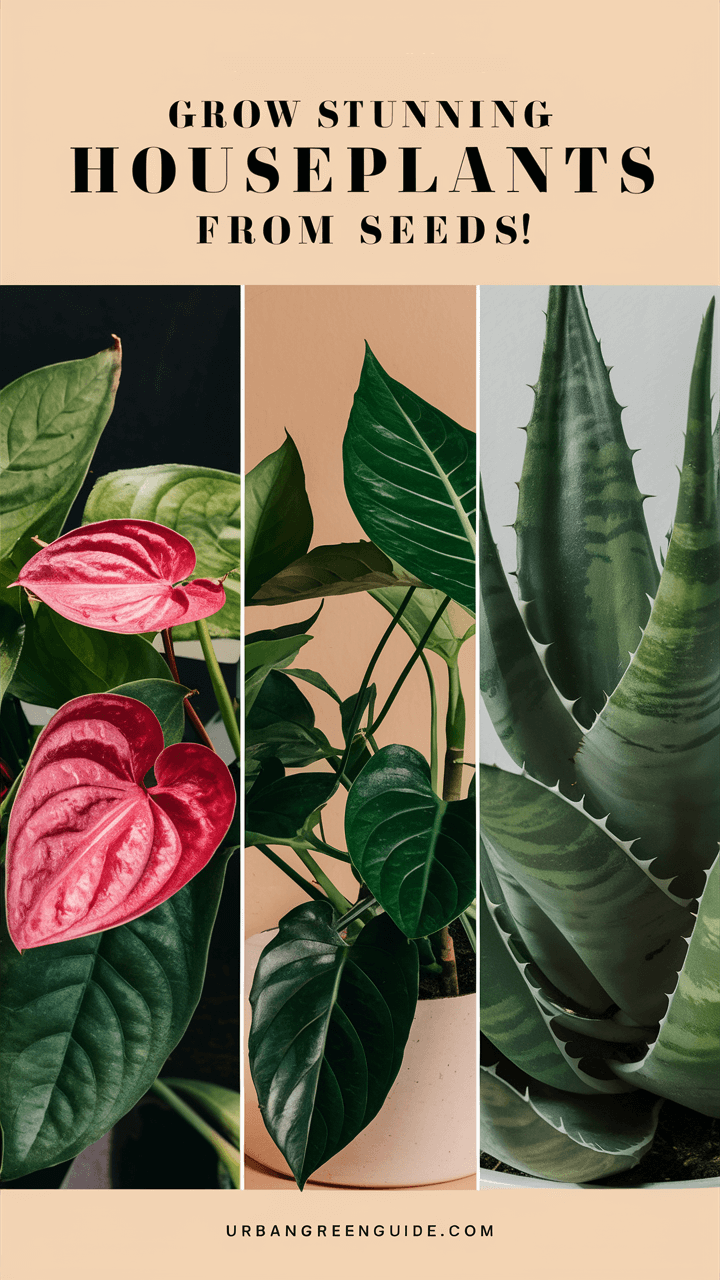
Ready to become a seed-starting wizard? Grab your gardening gloves, a sprinkle of patience, and let’s get growing!
Why Grow House Plants from Seeds?
Growing house plants from seeds is like watching a miracle unfold right before your eyes. You start with tiny seeds, nurture them, and before you know it, you have beautiful, thriving plants. Plus, starting plants from seeds is cost-effective. You can grow a wide variety of plants without breaking the bank.
Here are a few reasons why you’ll love growing house plants from seeds:
- Cost-effective: Seeds are cheaper than buying mature plants.
- Variety: You have access to a wider variety of plants.
- Satisfaction: There’s a great sense of accomplishment in growing plants from scratch.
Where to Get the Best Seeds
Finding high-quality seeds is crucial for successful germination. Here are some places to look:
- Local Garden Centers: These stores often carry a wide variety of seeds suitable for your region.
- Online Seed Companies: Websites like Burpee, Johnny's Selected Seeds, and Seed Savers Exchange offer a vast selection of seeds with detailed growing information.
- Farmer's Markets: Sometimes local farmers sell seeds that are well-suited to your area.
- Seed Swaps: Join gardening groups or online communities where you can trade seeds with other gardeners.
Equipment to Grow Houseplants from Seeds
Starting houseplants from seeds requires a few essential tools:
- Seed Trays or Pots: These are where you'll plant your seeds. Seed trays with individual cells are great for starting multiple seeds at once.
- Seedling Mix: Use a light, well-draining soil mix designed for seedlings. Regular garden soil is too heavy and can hinder growth.
- Humidity Dome: This cover helps maintain moisture and warmth, creating a mini-greenhouse effect for your seeds.
- Watering Can or Spray Bottle: A gentle watering tool ensures you don't wash away the tiny seeds.
- Grow Lights: If you don't have a sunny window, grow lights provide the necessary light for your seedlings.
- Labels: Keep track of what you've planted by labeling your pots or trays.
Check out this great video by Valerie. In this video, she covers everything you need to know about starting seeds indoors! From the best times to sow seeds to the dos and don’ts of indoor seed starting, and even common mistakes to avoid, this video is packed with tips and tricks perfect for beginners.
Best House Plants from Seeds
When it comes to growing house plants from seeds, not all plants are created equal. Some are easier to grow than others, especially for beginners. Here are some of the best house plants you can grow from seeds:
Spider Plant (Chlorophytum comosum)
Botanical Name: Chlorophytum comosum
Sun Exposure: Indirect light
Soil Type: Well-draining potting mix
Soil pH: 6.0-7.0
USDA Hardiness Zone: 9-11 (indoors)
Water Needs: Moderate, allow soil to dry between waterings
Why You'll Love It: Spider Plants are superstars when it comes to purifying the air. Plus, they have cool-looking arching leaves and baby spiderettes that dangle down, which makes them look like they’re dancing!
Care Tips: These plants are tough cookies and can survive in a range of conditions. They prefer indirect light, so no need to put them in direct sunlight. Water them moderately and make sure the soil dries out a bit between waterings. If you see brown tips, it might be because of fluoride in the water, so try using distilled water or rainwater.
Peace Lily (Spathiphyllum)

Botanical Name: Spathiphyllum
Sun Exposure: Low to bright, indirect light
Soil Type: Well-draining potting mix
Soil pH: 5.8-6.5
USDA Hardiness Zone: 10-12 (indoors)
Water Needs: High, likes consistently moist soil
Why You'll Love It: Peace Lilies are not just beautiful with their elegant white flowers, but they’re also amazing air purifiers. They’re perfect for adding a touch of peace and calm to any room.
Care Tips: Peace Lilies thrive in low to bright indirect light. Keep the soil consistently moist but not soggy. They love humidity, so misting them occasionally or placing them near a humidity source is a great idea. Remember to wipe their leaves to keep them dust-free and shiny!
Aloe Vera
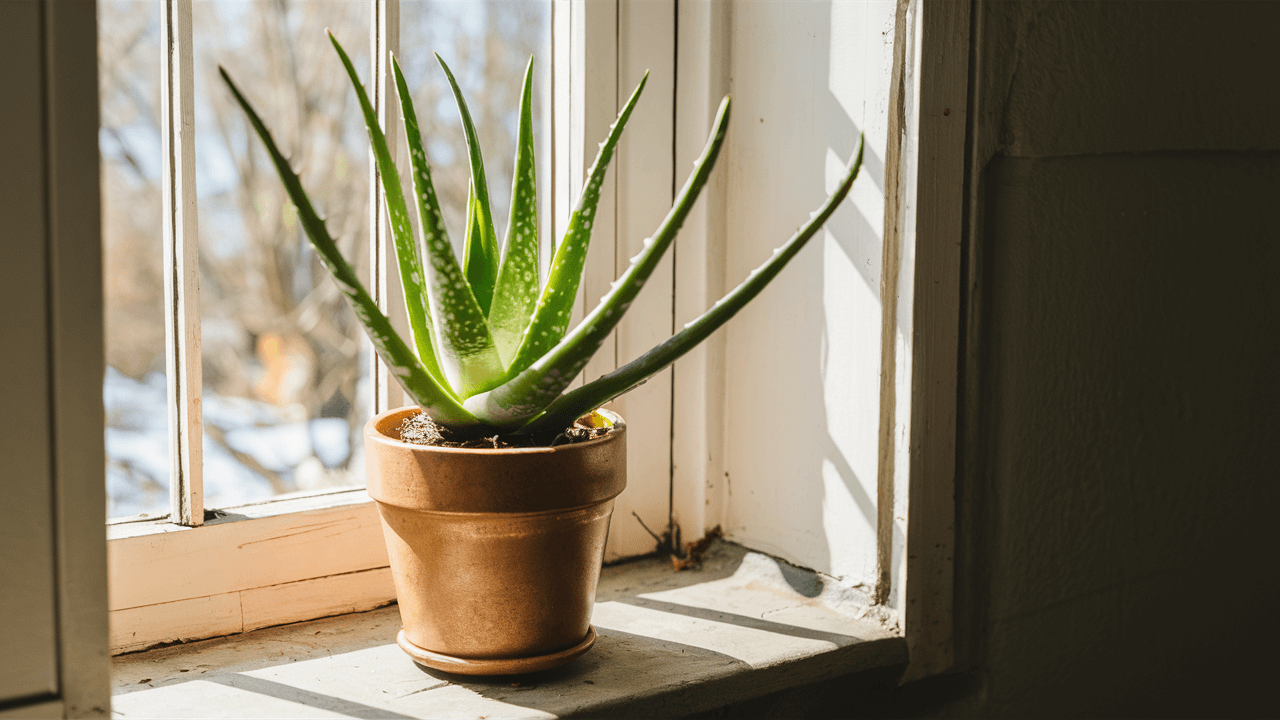
Botanical Name: Aloe barbadensis miller
Sun Exposure: Bright, indirect light
Soil Type: Cactus or succulent mix
Soil pH: 7.0-8.5
USDA Hardiness Zone: 8-11 (indoors)
Water Needs: Low, allow soil to dry out completely between waterings
Why You'll Love It: Aloe Vera is like a green first-aid kit. It’s famous for its soothing gel that can be used for cuts, burns, and skin care. Plus, it’s a tough plant that doesn’t need much attention.
Care Tips: Aloe Vera loves bright, indirect sunlight. Water it sparingly, letting the soil dry out completely between waterings to avoid root rot. Use a cactus or succulent potting mix for best results. If you see it getting too leggy, it might need more light.
English Ivy (Hedera helix)
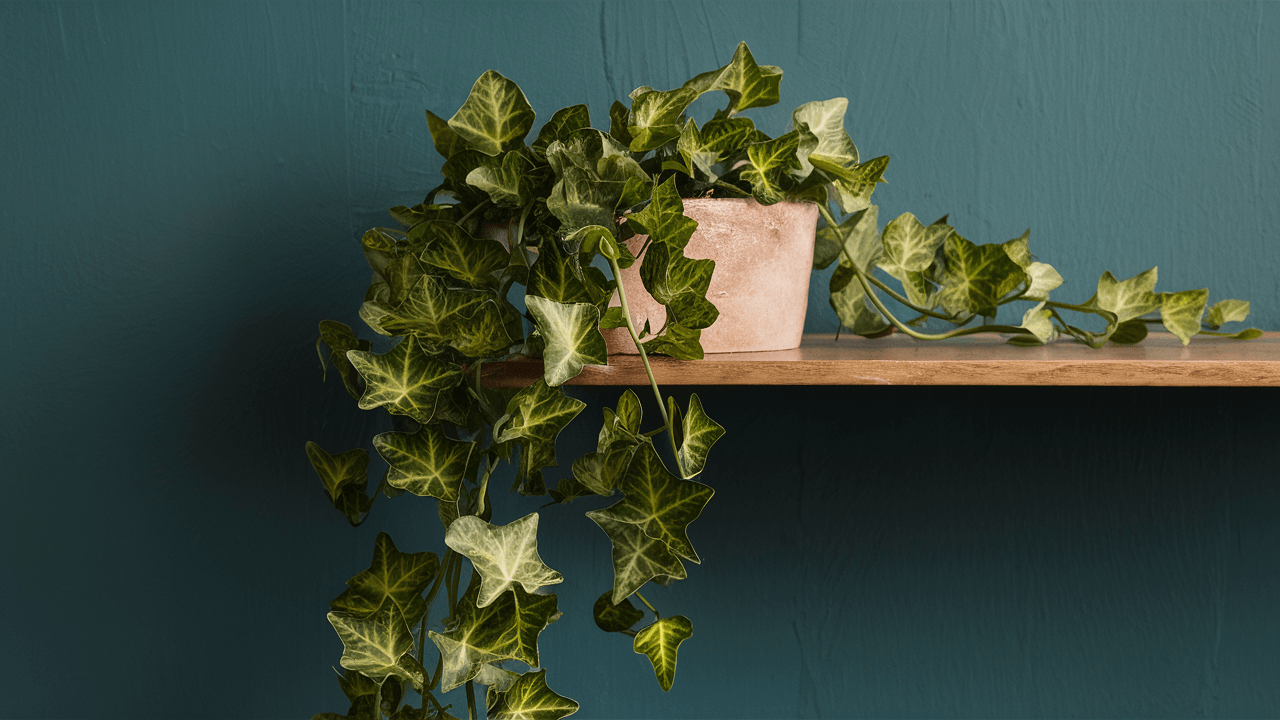
Botanical Name: Hedera helix
Sun Exposure: Part shade to full shade
Soil Type: Moist, well-draining potting mix
Soil pH: 6.5-7.5
USDA Hardiness Zone: 4-9 (indoors)
Water Needs: Moderate, keep soil moist
Why You'll Love It: English Ivy is like the secret agent of plants. It’s versatile, adaptable, and can scale walls like a pro! This evergreen climber is perfect for creating a lush, green curtain in your living room, balcony, or patio. Plus, it’s super low-maintenance.
Care Tips: Ivy thrives in moist, well-drained soil. While it loves part shade to full shade, it can tolerate a range of conditions. Just give it a little love and some occasional pruning, and it’ll reward you with a beautiful, dense cover.
Snake Plant (Sansevieria trifasciata)
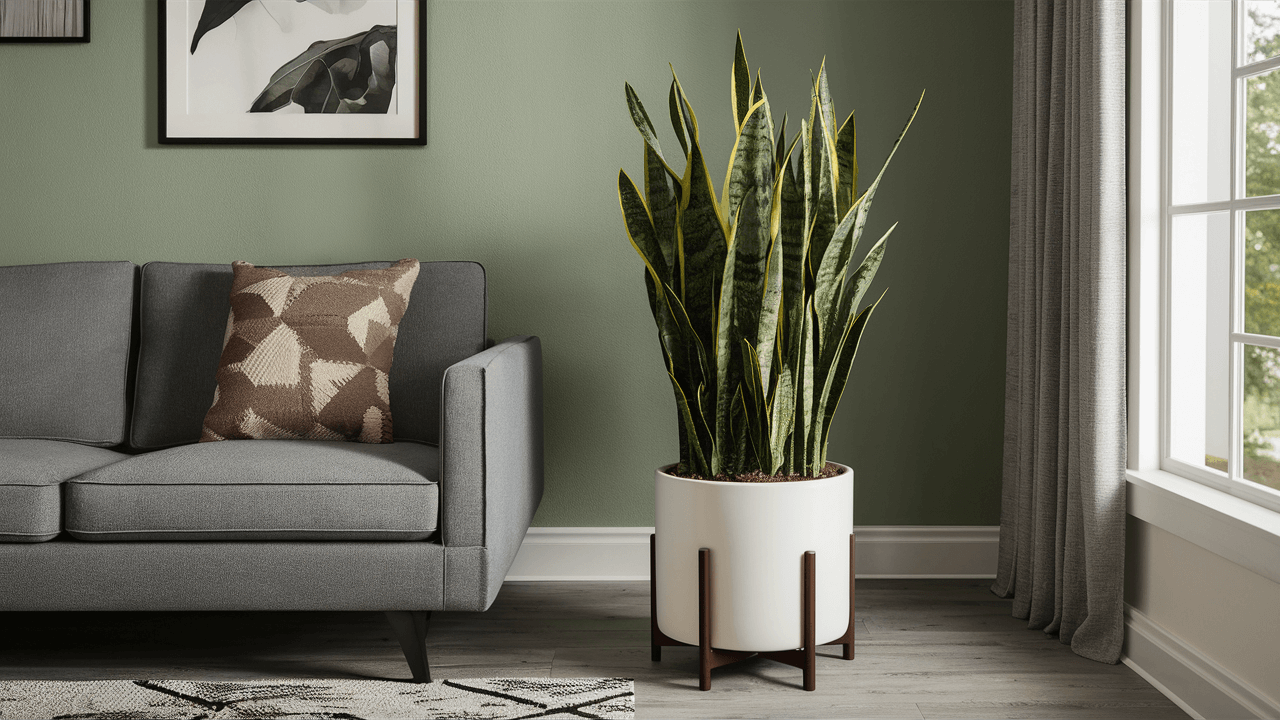
Botanical Name: Sansevieria trifasciata
Sun Exposure: Low to bright, indirect light
Soil Type: Well-draining potting mix
Soil pH: 4.5-7.0
USDA Hardiness Zone: 9-11 (indoors)
Water Needs: Low, allow soil to dry out completely between waterings
Why You'll Love It: Snake Plants are like the superheroes of the plant world. They’re nearly indestructible and can thrive in almost any light condition. Plus, they look like they’re standing guard with their tall, sword-like leaves.
Care Tips: Snake Plants prefer low to bright indirect light but can tolerate low light. Water them sparingly, allowing the soil to dry out completely between waterings. They’re very forgiving, making them perfect for beginners. Plus, they purify the air, which is always a bonus!
Pothos (Epipremnum aureum)
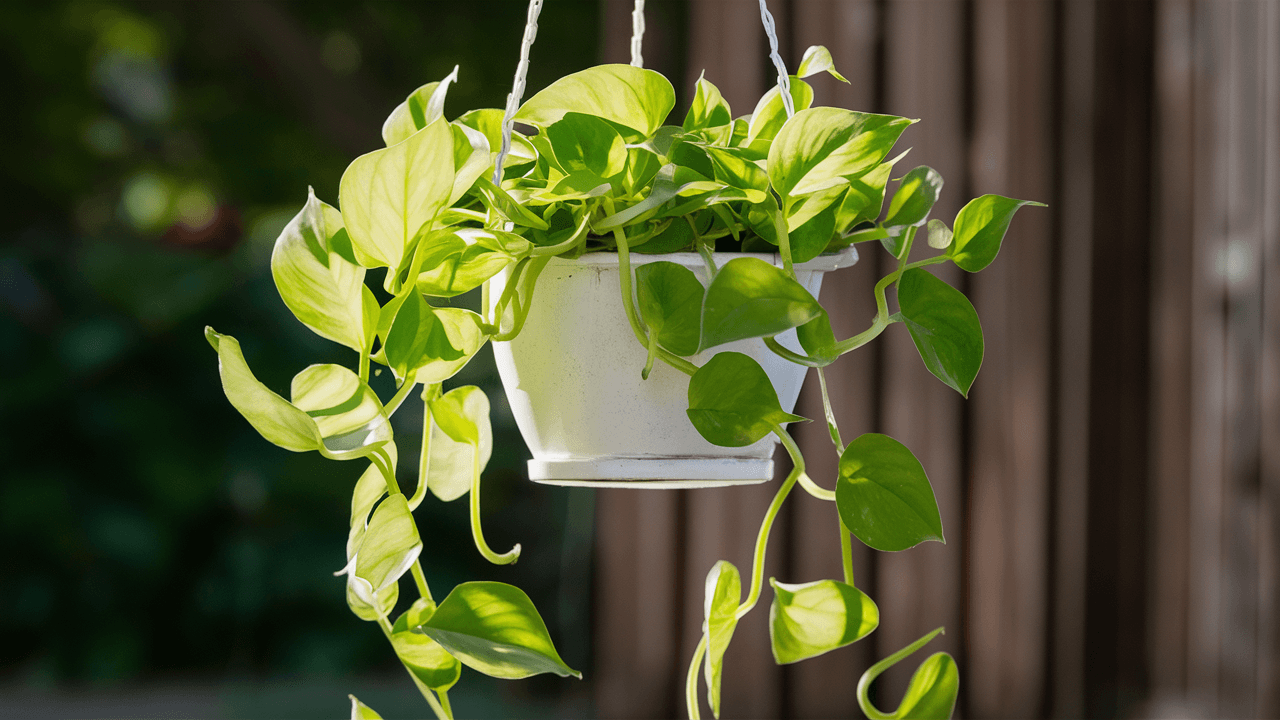
Botanical Name: Epipremnum aureum
Sun Exposure: Low to bright, indirect light
Soil Type: Well-draining potting mix
Soil pH: 6.1-6.5
USDA Hardiness Zone: 10-12 (indoors)
Water Needs: Moderate, allow soil to dry between waterings
Why You'll Love It: Pothos is a real champ when it comes to being easy to grow. It has beautiful trailing vines and heart-shaped leaves that can brighten up any room. Plus, it’s great at purifying the air.
Care Tips: Pothos thrives in low to bright indirect light. Water it moderately, allowing the soil to dry out between waterings. It’s very forgiving, so even if you forget to water it now and then, it’ll still survive. It can grow in water, soil, or even as a hanging plant.
Maranta (Prayer Plant)

Botanical Name: Maranta leuconeura
Sun Exposure: Indirect light
Soil Type: Well-draining potting mix
Soil pH: 5.5-6.0
USDA Hardiness Zone: 11-12 (indoors)
Water Needs: Moderate, keep soil consistently moist
Why You'll Love It: Maranta plants are famous for their striking leaf patterns and their habit of folding their leaves at night, like hands in prayer. They’re great for adding a splash of color and pattern to your indoor garden.
Care Tips: Marantas prefer bright, indirect light but can tolerate low light. Keep the soil consistently moist, but not soggy, and ensure good drainage. They love humidity, so mist them regularly or place them near a humidifier.
Cast Iron Plant (Aspidistra elatior)
Botanical Name: Aspidistra elatior
Sun Exposure: Low to bright, indirect light
Soil Type: Well-draining potting mix
Soil pH: 5.5-6.5
USDA Hardiness Zone: 7-11 (indoors)
Water Needs: Low to moderate, allow soil to dry between waterings
Why You'll Love It: True to its name, the Cast Iron Plant is nearly indestructible. It can survive neglect, low light, and poor soil, making it perfect for beginners or those with a busy lifestyle.
Care Tips: Cast Iron Plants thrive in low to bright indirect light. Water them sparingly, allowing the soil to dry out between waterings. They don’t need much attention, so you can just set it and forget it!
Swiss Cheese Plant (Monstera deliciosa)

Botanical Name: Monstera deliciosa
Sun Exposure: Bright, indirect light
Soil Type: Well-draining potting mix
Soil pH: 5.5-7.0
USDA Hardiness Zone: 10-12 (indoors)
Water Needs: Moderate, allow soil to dry between waterings
Why You'll Love It: Swiss Cheese Plants are known for their large, unique leaves with natural holes, which give them a distinct look. They can add a tropical vibe to any space and are quite easy to care for.
Care Tips: Monsteras love bright, indirect light but can tolerate low light. Water them moderately, letting the soil dry out between waterings. They enjoy a bit of humidity, so misting them occasionally can help.
Four Basic Things Seed Needs to Germinate
Germinating seeds is like starting a magical journey. Imagine a tiny seed waking up and beginning its adventure to become a beautiful plant. For this to happen, seeds need a few key things:
1. Moisture
Seeds need water to kickstart their germination process. When seeds absorb water, they swell and break their outer shell, allowing the tiny plant inside to start growing. Think of it as a seed's wake-up call. Keep the soil moist but not soggy, like a damp sponge.
2. Warmth
Seeds are a bit like us; they don't like being too cold. Most seeds need warmth to germinate, usually around 65-75°F (18-24°C). This warmth tells the seed that it's the right time to grow. You can use a seedling heat mat to keep the soil nice and cozy.
3. Light
Some seeds need light to germinate, while others prefer the dark. Once they sprout, almost all seedlings need light to grow strong and healthy. A sunny windowsill or grow lights can provide the light they need. It's like giving them their daily dose of sunshine.
4. Air
Seeds and seedlings also need fresh air to breathe. Good airflow helps prevent mold and keeps the seedlings healthy. You can achieve this by not overcrowding your seeds and using a small fan to circulate the air gently.
How to Grow Indoor Plants from Seeds
Growing indoor plants from seeds requires some patience and a bit of know-how. Here’s a step-by-step guide to get you started:
1. Choose Your Seeds:
- Decide which plants you want to grow.
- Purchase high-quality seeds from a reputable source.
2. Prepare Your Containers:
- Use seed trays or small pots with drainage holes.
- Fill them with a seed-starting mix, which is lighter and drains well.
3. Plant the Seeds:
- Follow the instructions on the seed packet for planting depth and spacing.
- Lightly water the soil after planting.
4. Provide the Right Conditions:
- Place the containers in a warm, bright spot. A sunny windowsill works great.
- Keep the soil moist but not waterlogged.
5. Transplanting:
- Once the seedlings are big enough to handle, transplant them into larger pots.
Large House Plants from Seeds
If you’re looking to make a bold statement with your indoor garden, large house plants are the way to go. Growing large house plants from seeds can be a bit more challenging, but the results are worth it. Here are a few large house plants you can grow from seeds:
Fiddle Leaf Fig (Ficus lyrata)
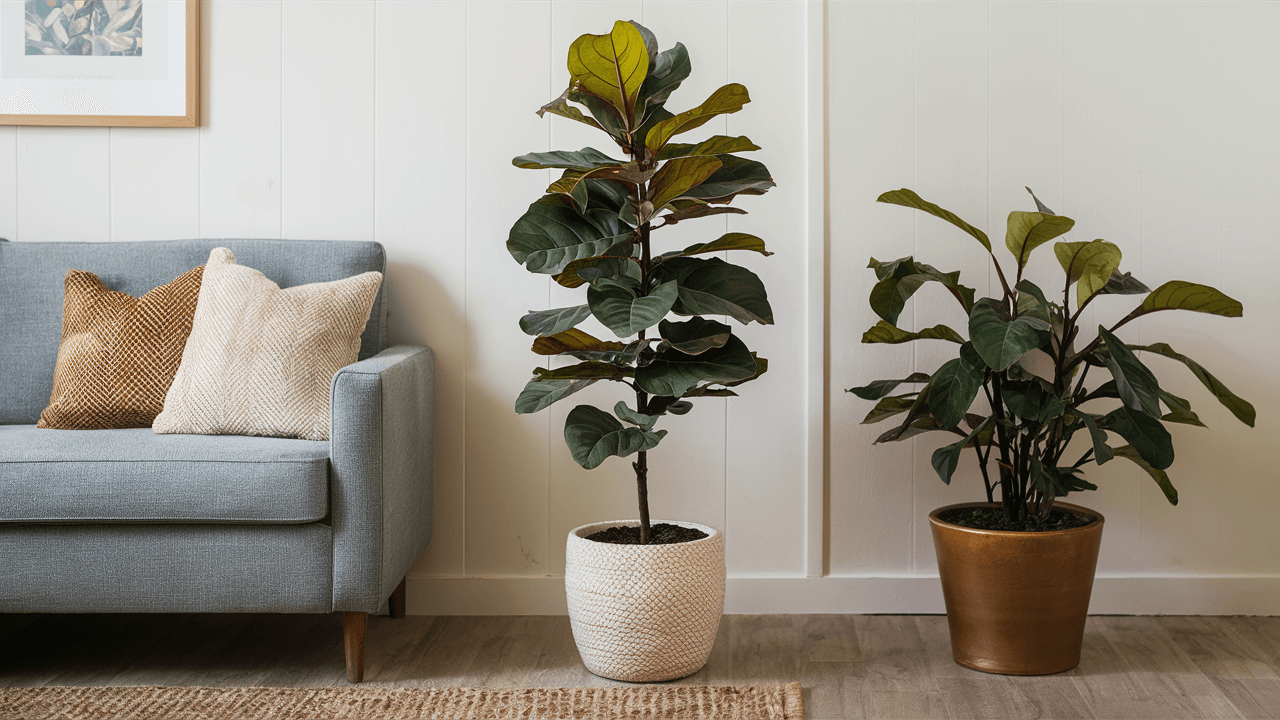
Botanical Name: Ficus lyrata
Sun Exposure: Bright, indirect light
Soil Type: Well-draining potting mix
Soil pH: 6.0-7.0
USDA Hardiness Zone: 10-12 (indoors)
Water Needs: Moderate, allow soil to dry between waterings
Why You'll Love It: Fiddle Leaf Figs are a trendy choice for indoor plant lovers. Their large, violin-shaped leaves make a bold statement in any room. They can be a bit finicky but are well worth the effort.
Care Tips: Fiddle Leaf Figs thrive in bright, indirect light. Water them moderately, allowing the soil to dry out between waterings. They like consistent conditions, so avoid moving them around too much. Dust their leaves regularly to keep them healthy and looking their best.
Rubber Plant (Ficus elastica)

Botanical Name: Ficus elastica
Sun Exposure: Bright, indirect light
Soil Type: Well-draining potting mix
Soil pH: 5.5-7.5
USDA Hardiness Zone: 10-12 (indoors)
Water Needs: Moderate, allow soil to dry between waterings
Why You'll Love It: Rubber Plants are loved for their glossy, dark green leaves and robust growth. They can grow quite large, making them a fantastic focal point in any room.
Care Tips: Rubber Plants prefer bright, indirect light but can tolerate lower light. Water them moderately, letting the soil dry out between waterings. They’re relatively easy to care for and can adapt to different conditions, making them great for beginners.
Bird of Paradise (Strelitzia reginae)

Botanical Name: Strelitzia reginae
Sun Exposure: Bright, indirect light
Soil Type: Well-draining potting mix
Soil pH: 5.5-7.5
USDA Hardiness Zone: 10-12 (indoors)
Water Needs: Moderate, allow soil to dry between waterings
Why You'll Love It: The Bird of Paradise is a stunning plant with large, banana-like leaves and striking orange and blue flowers that resemble a bird in flight. It’s perfect for adding a touch of the tropics to your home.
Care Tips: Birds of Paradise thrive in bright, indirect light and can tolerate some direct sunlight. Water them moderately, allowing the soil to dry out between waterings. They love humidity, so misting them or placing them in a humid room will help them thrive.
Fast-Growing House Plants from Seeds
If patience isn’t your strong suit, you might want to opt for fast-growing houseplants. These plants grow quickly, giving you the satisfaction of seeing results sooner. Here are some fast-growing houseplants from seeds:
Basil (Ocimum basilicum)

Botanical Name: Ocimum basilicum
Sun Exposure: Full sun
Soil Type: Well-draining potting mix
Soil pH: 6.0-7.5
USDA Hardiness Zone: 10-11 (indoors)
Water Needs: Moderate, keep soil consistently moist
Why You'll Love It: Basil is not only a great herb for cooking, but it’s also a lovely plant to grow indoors. Its fragrant leaves can be used fresh in a variety of dishes, adding a burst of flavor to your meals.
Care Tips: Basil needs full sun, so place it in a sunny spot. Keep the soil consistently moist but not soggy. Pinch off the flowers to encourage more leaf growth. Basil loves warm conditions, so keep it away from drafts and cold windows.
Zinnia
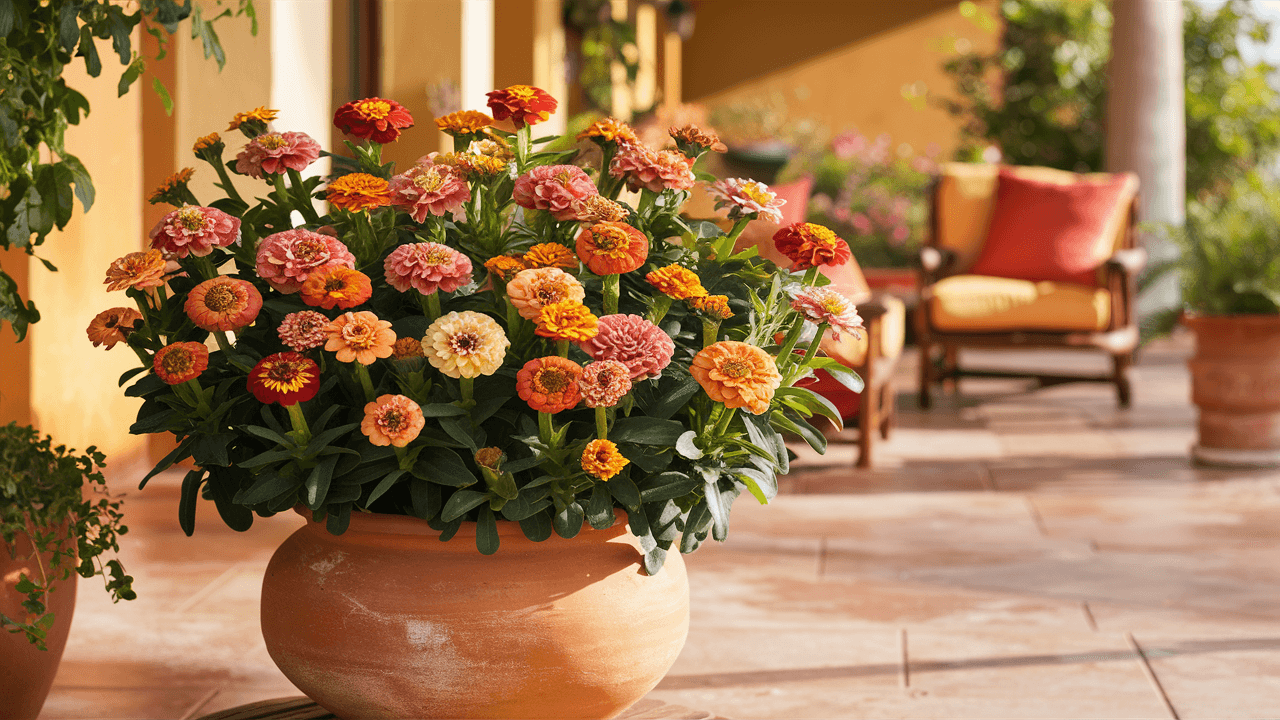
Botanical Name: Zinnia elegans
Sun Exposure: Full sun
Soil Type: Well-draining potting mix
Soil pH: 5.5-7.5
USDA Hardiness Zone: 2-11 (indoors)
Water Needs: Moderate, allow soil to dry between waterings
Why You'll Love It: Zinnias are vibrant, colorful flowers that can brighten up any indoor garden. They come in a variety of colors and sizes, making them perfect for adding a pop of color to your space.
Care Tips: Zinnias need full sun to thrive. Water them moderately, allowing the soil to dry out between waterings. They prefer warm conditions and well-draining soil. Deadhead spent flowers to encourage more blooms throughout the growing season.
Sunflower (Helianthus annuus)
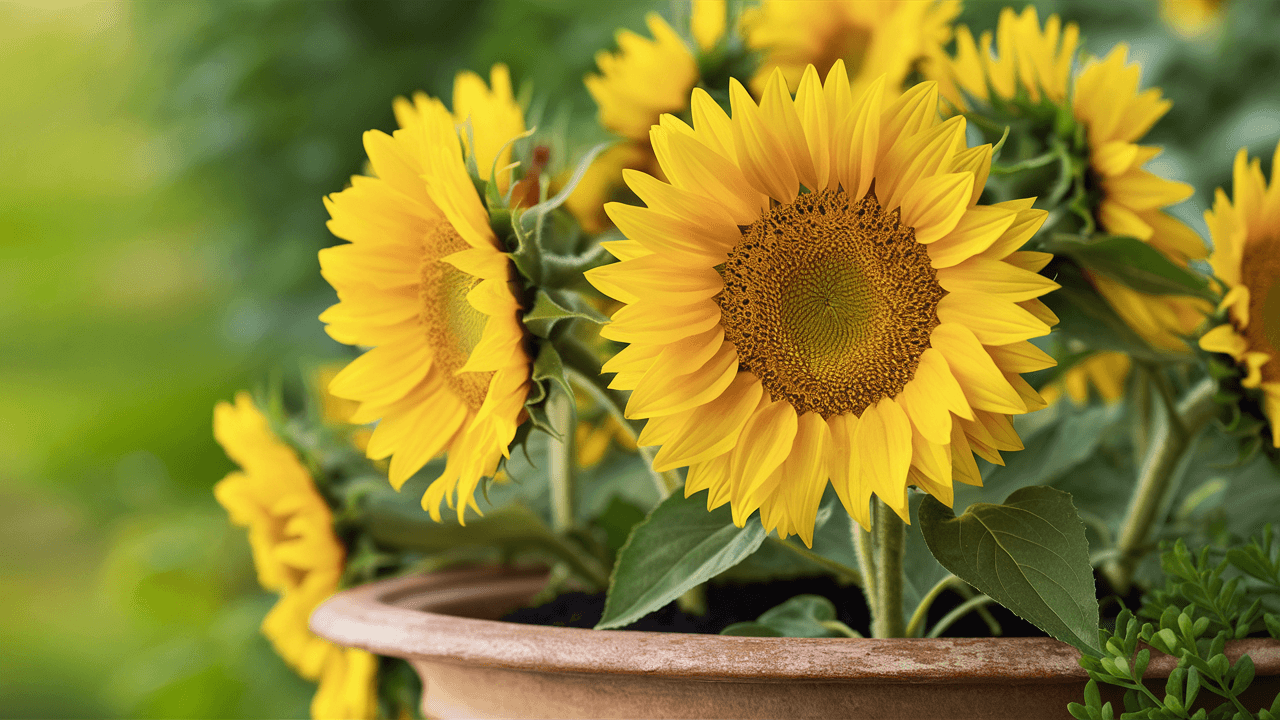
Botanical Name: Helianthus annuus
Sun Exposure: Full sun
Soil Type: Well-draining potting mix
Soil pH: 6.0-7.5
USDA Hardiness Zone: 4-9 (indoors)
Water Needs: Moderate, keep soil consistently moist
Why You'll Love It: Sunflowers are like rays of sunshine you can grow indoors. Their bright yellow petals and large flower heads can bring a cheerful vibe to any room. Plus, they're relatively easy to grow from seeds.
Care Tips: Sunflowers thrive in full sun, so place them in the sunniest spot you have. Keep the soil consistently moist but not waterlogged. They can grow quite tall, so ensure they have enough space and support if needed.
Rare Houseplant Seeds
For those who love a bit of a challenge and enjoy collecting unique plants, growing rare houseplants from seeds can be incredibly rewarding. Here are some rare houseplant seeds to consider:
Anthurium Forgetii
Botanical Name: Anthurium forgetii
Sun Exposure: Bright, indirect light
Soil Type: Well-draining potting mix
Soil pH: 5.5-6.5
USDA Hardiness Zone: 10-11 (indoors)
Water Needs: Moderate, keep soil consistently moist
Why You'll Love It: Anthurium Forgetii is like the fashionista of the plant world. Its heart-shaped leaves are not only dark green but also have a chic, textured finish that makes it stand out from the crowd. This plant is perfect for adding a touch of sophistication and elegance to any room.
Check out Kristina’s video where she shares her first-time journey of germinating this stunning plant from seed! As a fellow beginner who nailed the process, Kristina offers easy-to-follow tips and tricks that make starting your own Anthurium Forgetii a breeze.
Care Tips: Give this beauty bright, indirect light to keep those leaves looking their best. Water it regularly to keep the soil consistently moist, but make sure it drains well to prevent any soggy situations. It loves a bit of humidity, so misting or a nearby humidifier can help it feel right at home. With a bit of love and care, Anthurium Forgetii will reward you with its stunning, show-stopping foliage.
Purple Shamrock (Oxalis triangularis)
Botanical Name: Oxalis triangularis
Sun Exposure: Bright, indirect light
Soil Type: Well-draining potting mix
Soil pH: 5.5-7.0
USDA Hardiness Zone: 8-11 (indoors)
Water Needs: Moderate, allow soil to dry slightly between waterings
Why You'll Love It: The Purple Shamrock is known for its striking, triangular purple leaves and delicate white or pink flowers. It's a unique and attractive plant that adds a touch of color and elegance to your indoor garden.
Care Tips: Purple Shamrocks prefer bright, indirect light. Water them moderately, letting the soil dry slightly between waterings. They may go dormant in the summer, so don’t worry if the leaves die back; just reduce watering and they’ll come back in the fall.
Living Stones (Lithops)
Botanical Name: Lithops
Sun Exposure: Bright, indirect light
Soil Type: Cactus or succulent mix
Soil pH: 6.5-7.5
USDA Hardiness Zone: 10-11 (indoors)
Water Needs: Low, water sparingly
Why You'll Love It: Living Stones are fascinating succulents that resemble small stones or pebbles. They’re great conversation starters and perfect for small spaces or as part of a succulent collection.
Care Tips: Lithops need bright, indirect light. Water them very sparingly, as they’re prone to root rot. In their dormant period (winter), avoid watering altogether. They grow slowly, so be patient and enjoy their unique appearance.
Corkscrew Plant (Albuca spiralis)
Botanical Name: Albuca spiralis
Sun Exposure: Bright, indirect light
Soil Type: Well-draining potting mix
Soil pH: 6.0-7.5
USDA Hardiness Zone: 8-10 (indoors)
Water Needs: Moderate, allow soil to dry between waterings
Why You'll Love It: The Corkscrew Plant is a quirky, fun plant with curly, spiral leaves that look like they're dancing. It’s a unique addition to any indoor garden and is sure to bring a smile to your face.
Care Tips: Corkscrew Plants prefer bright, indirect light. Water them moderately, allowing the soil to dry out between waterings. They enjoy a bit of humidity, so misting them occasionally can help.
Tips for Success
Growing houseplants from seeds can be a bit tricky, but with the right tips, you’ll be on your way to a thriving indoor garden. Here are some tips to help you succeed:
- Light: Ensure your plants get enough light. If natural light is limited, consider using grow lights.
- Watering: Be careful not to overwater your plants. Most seeds need to be kept moist but not soggy.
- Temperature: Keep your plants in a warm environment. Most seeds germinate best at temperatures between 70-75°F.
- Fertilizing: Once your seedlings have a few sets of leaves, you can start feeding them with a diluted fertilizer.
Houseplant Seeds and Bulbs
In addition to seeds, bulbs are another great option for growing houseplants. Bulbs often produce larger plants and can be easier to start with. Here are some houseplant seeds and bulbs you might consider:
Amaryllis (Hippeastrum)

Botanical Name: Hippeastrum
Sun Exposure: Bright, indirect light
Soil Type: Well-draining potting mix
Soil pH: 6.0-6.5
USDA Hardiness Zone: 8-11 (indoors)
Water Needs: Moderate, keep soil consistently moist
Why You'll Love It: Amaryllis plants are famous for their large, stunning flowers that come in a variety of colors. They’re perfect for adding a dramatic touch to your indoor garden, especially during the winter months.
Care Tips: Amaryllis prefers bright, indirect light. Keep the soil consistently moist but not waterlogged. After blooming, allow the foliage to die back naturally before reducing watering. Store the bulb in a cool, dry place before replanting it in the fall.
Paperwhites (Narcissus papyraceus)

Botanical Name: Narcissus papyraceus
Sun Exposure: Bright, indirect light
Soil Type: Well-draining potting mix
Soil pH: 6.0-6.5
USDA Hardiness Zone: 8-11 (indoors)
Water Needs: Moderate, keep soil consistently moist
Why You'll Love It: Paperwhites are known for their delicate, fragrant white flowers that bloom in the winter, bringing a touch of spring indoors. They’re easy to grow and can add a lovely scent to your home.
Care Tips: Paperwhites thrive in bright, indirect light. Keep the soil consistently moist but not waterlogged. They don’t need much attention, making them great for beginner gardeners. Once they’re done blooming, they can be composted or replanted outdoors in suitable climates.
Caladium
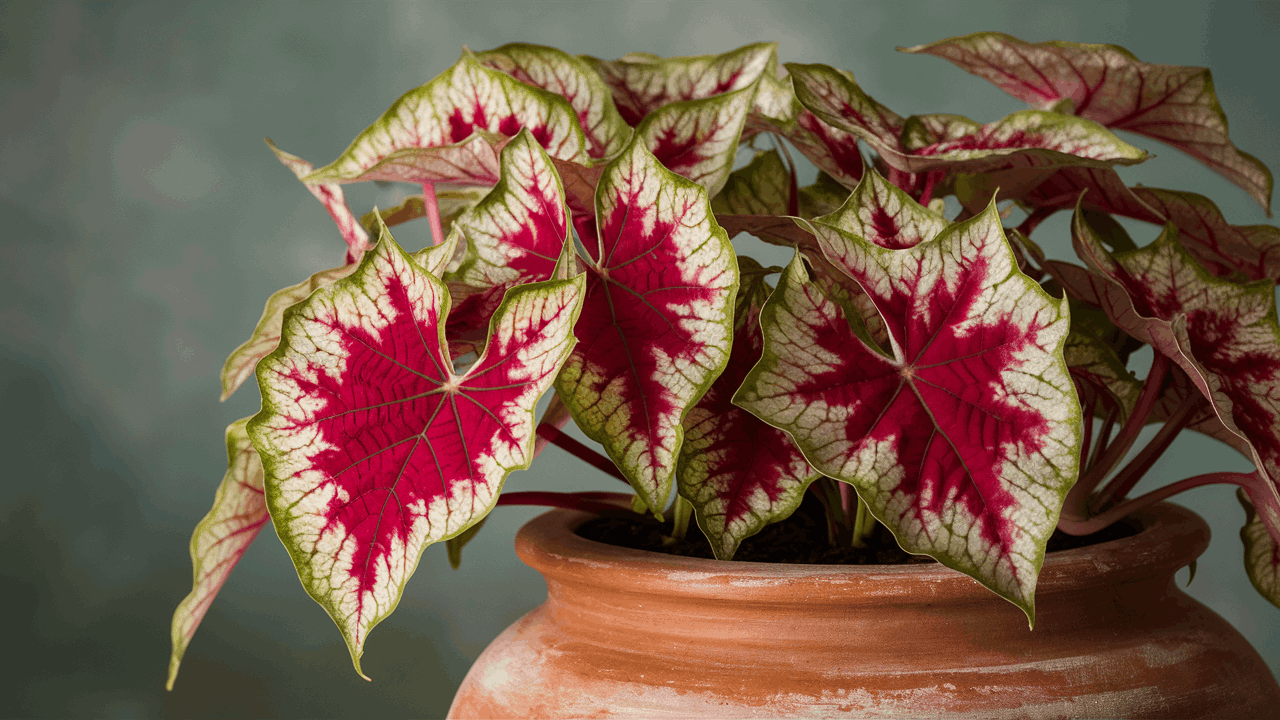
Botanical Name: Caladium bicolor
Sun Exposure: Indirect light to partial shade
Soil Type: Well-draining potting mix
Soil pH: 6.0-6.5
USDA Hardiness Zone: 9-11 (indoors)
Water Needs: Moderate, keep soil consistently moist
Why You'll Love It: Caladiums are known for their vibrant, colorful leaves that come in a variety of patterns and colors. They’re perfect for adding a splash of color and tropical feel to your indoor garden.
Care Tips: Caladiums prefer indirect light to partial shade. Keep the soil consistently moist but not soggy. They thrive in warm, humid conditions, so misting them regularly or placing them near a humidifier can help. If they go dormant in the winter, reduce watering and let them rest until spring.
Growing House Plants from Seeds: Challenges and Rewards
Growing house plants from seeds isn’t always easy, but the rewards far outweigh the challenges. Here are some common challenges you might face and how to overcome them:
- Damping-off: This is a common problem where seedlings suddenly die. To prevent it, ensure good air circulation and avoid overwatering.
- Low Germination Rates: Sometimes seeds don’t germinate. This could be due to old seeds or improper conditions. Always use fresh seeds and follow the planting instructions.
- Pests: Indoor plants can attract pests like aphids and spider mites. Keep an eye on your plants and treat any infestations promptly.
Despite these challenges, the rewards of growing houseplants from seeds are immense. You get to watch your plants grow from tiny seeds into beautiful, mature plants, and there’s nothing quite like the satisfaction of knowing you did it all yourself.
Common Questions About Growing Houseplants from Seeds
Can You Grow Houseplants from Seeds?
Absolutely! Growing houseplants from seeds is a fun and rewarding way to start your indoor garden. It might take a bit longer than buying mature plants, but watching your seeds sprout and grow is incredibly satisfying.
What is the Best Houseplant to Start from Seed?
One of the best houseplants to start from seed is the Spider Plant. It's easy to grow, sprouts quickly, and is very forgiving if you make a mistake. Other great options include Basil and Maranta.
What Seeds Can I Sow Indoors?
You can sow many seeds indoors, including:
- Herbs: Basil, mint, parsley
- Flowers: Zinnia, marigold, sunflower
- Houseplants: Spider plant, peace lily, English ivy
What Seeds Sprout the Fastest Indoors?
Some of the fastest sprouting seeds include:
- Radishes: They can sprout in just a few days.
- Lettuce: Another quick sprouter, perfect for salads.
- Basil: This herb is quick to germinate and grow.
Are There Any Special Tips for Growing Houseplants from Seeds?
- Patience is Key: Some seeds take longer to germinate than others, so don't worry if they take a while to sprout.
- Keep It Moist: Ensure the soil stays consistently moist but not waterlogged.
- Provide Plenty of Light: Seedlings need lots of light to grow strong. If natural light is limited, use grow lights to supplement.
Growing Indoor Plants from Seeds: A Fun and Educational Activity
Growing indoor plants from seeds is not only a great hobby but also an educational activity for kids and adults alike. It teaches patience, responsibility, and a love for nature. Plus, it’s a wonderful way to spend quality time with your family.
So, what are you waiting for? Grab some seeds, get your hands dirty, and start growing your own indoor jungle today!
Happy gardening!
External resources:
For more tips on indoor gardening, check out these helpful resources and guides

